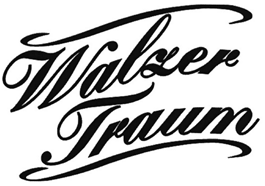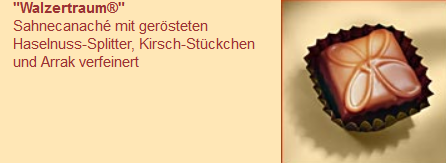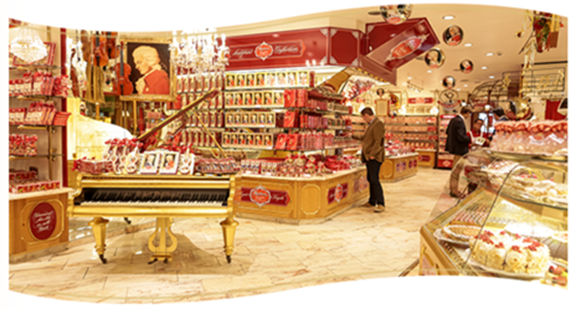Revocation with a broad generic term of goods – Walzertraum
The case: Making use of a broad generic term of goods in the list of goods covered by a trade mark can ultimately be a great risk to that trade mark’s continuing validity. This is demonstrated emphatically by the following case:
When the Austrian food wholesaler Wedl & Hofmann applied for the Union trade mark for coffee below,

the well-known confectionery ‘Reber’ filed an opposition on the basis of its own German trade mark.
![]()
Wedl & Hofmann defended itself by citing non-use. Reber’s trade mark ‘Walzertraum’ [waltz dream] was registered for ‘chocolate goods’, and it now had to prove that this trade mark had been genuinely used for ‘chocolate goods’ in order to establish its rights.
However, Reber had only used the brand for a particularly select honey, cream and truffle praline. The high quality of the product was in part due to it being made exclusively by hand:

In addition, the pralines were only sold in the well-known Reber confectionery shop in Bad Reichenhall for immediate consumption and were offered unpacked on trays:

Reber sold about 200 of these pralines a month. This amounted to 40–60 kg of handmade luxury chocolate products of the highest quality per year.
Was this scope of use sufficient for the trade mark to be protected?
Yes, said the Opposition Division. The use of the mark for the chocolates could apply to use for ‘chocolate goods’ as a whole, and the quantity sold was sufficient to indicate it was not a sham use, given the luxury nature of the products.
Was that right? The case went all the way through the courts.
The CJEU said that, in fact, the use of the mark for ‘pralines’ encompassed use for all registered ‘chocolate goods’. Pralines and chocolate goods fulfil the same purpose and have the same destination, as luxury products. A consumer wishing to purchase a product from such a product group would therefore readily associate an associated trade mark with all the goods belonging to that product group. The trade mark could equally fulfil its essential function of guaranteeing the origin of the goods or services concerned for all the goods belonging to that product group. This association may persist, with respect to the same purpose and intended use, even if the market and segments are different. Use of the mark for ‘chocolate goods’ was thus proven.
However, was the scope of use of the trade mark also sufficient?
Whether the use of a trade mark is serious must be assessed on the basis of all the facts and circumstances, and to succeed, it must be established that the trade mark is actually put to commercial use. This includes, in particular, uses that are considered to be justified in the respective economic sector in order to maintain or gain market share for the goods or services protected by the trade mark, also taking into account the nature of those goods or services.
Since the use of the trade mark ‘Walzertraum’ for pralines also comprised a use for ‘chocolate goods’, the reference market was the market for chocolate goods. However, Reber’s sales, amounting to 200 of the chocolates in question per month, were in no way sufficient to secure or gain a market share for ‘chocolate goods’.
Reber referred to the special nature of its chocolates, namely their luxury character. In luxury segments, even low turnover may be sufficient to establish serious use of a trade mark. However, in this case, despite the chocolates belonging to the luxury segment, the nature of the products did not justify special treatment. The price level of the chocolates was comparable to the price level of other chocolate goods and the Reber chocolates could be afforded and purchased by almost all of the general public – like all other chocolate goods.
As a result, the court ruled that the trade mark had not been genuinely used – measured against the reference market of chocolate goods. It was not only registered for hand-made chocolates. The trade mark could be cancelled for all ‘chocolate goods’, including Reber’s luxury, hand-made chocolates.
Court of Justice of the European Union, C-141/13 P
Learnings: If you have trade marks that cover a broad scope of goods but where use only applies to individual goods or services, be aware that in law, the trade mark can only be obtained for such goods and services that have the same purpose and intended use as the goods or services being seriously used. The range of goods or services thus delimited is the reference market for assessing the extent of use required to obtain protection for the trade mark. If you have any doubts as to whether the scope of use achieved creates or maintains a market share in the reference market, you should restrict the list of goods to which the trade mark applies in order to avoid potential cancellation of your trade mark.